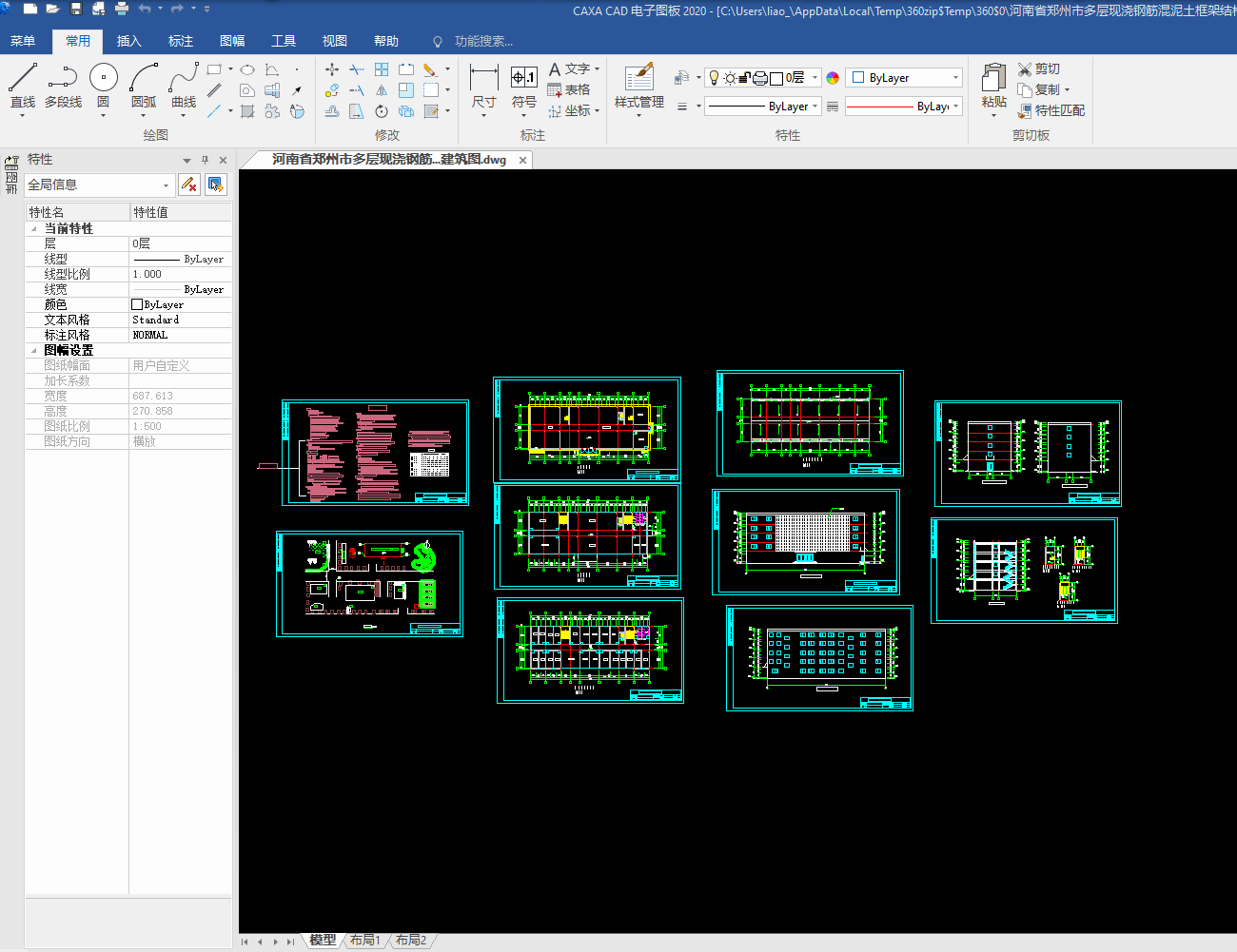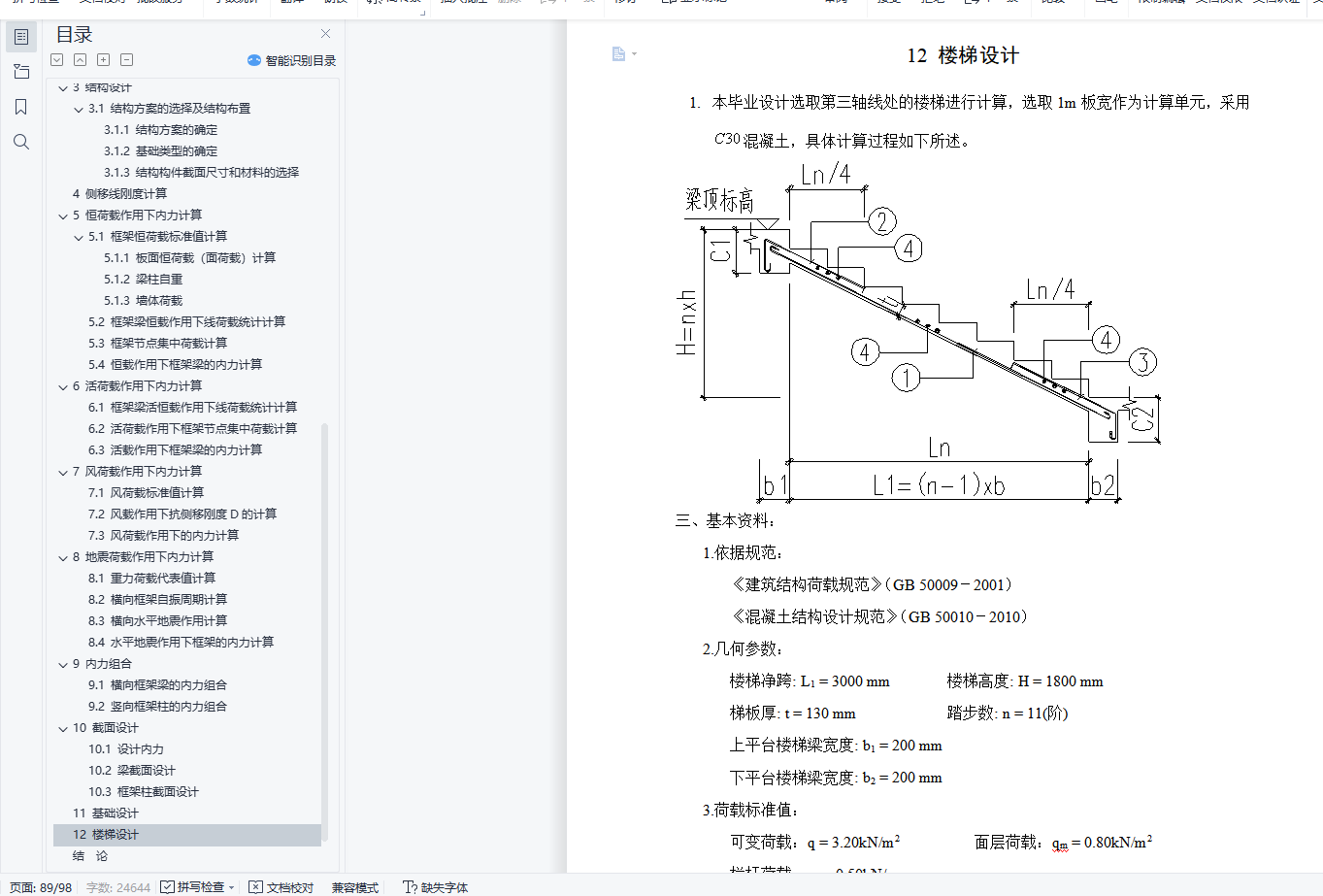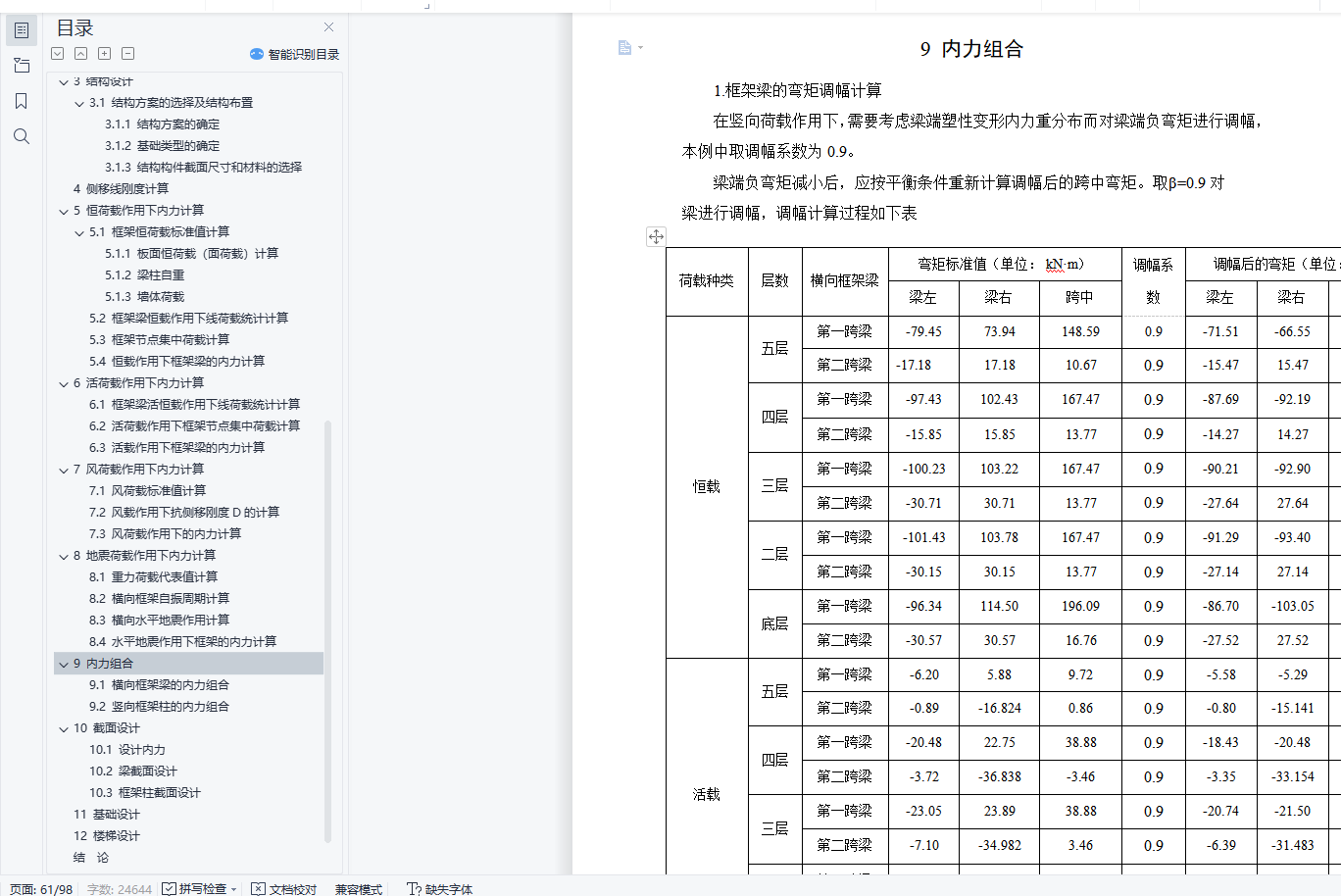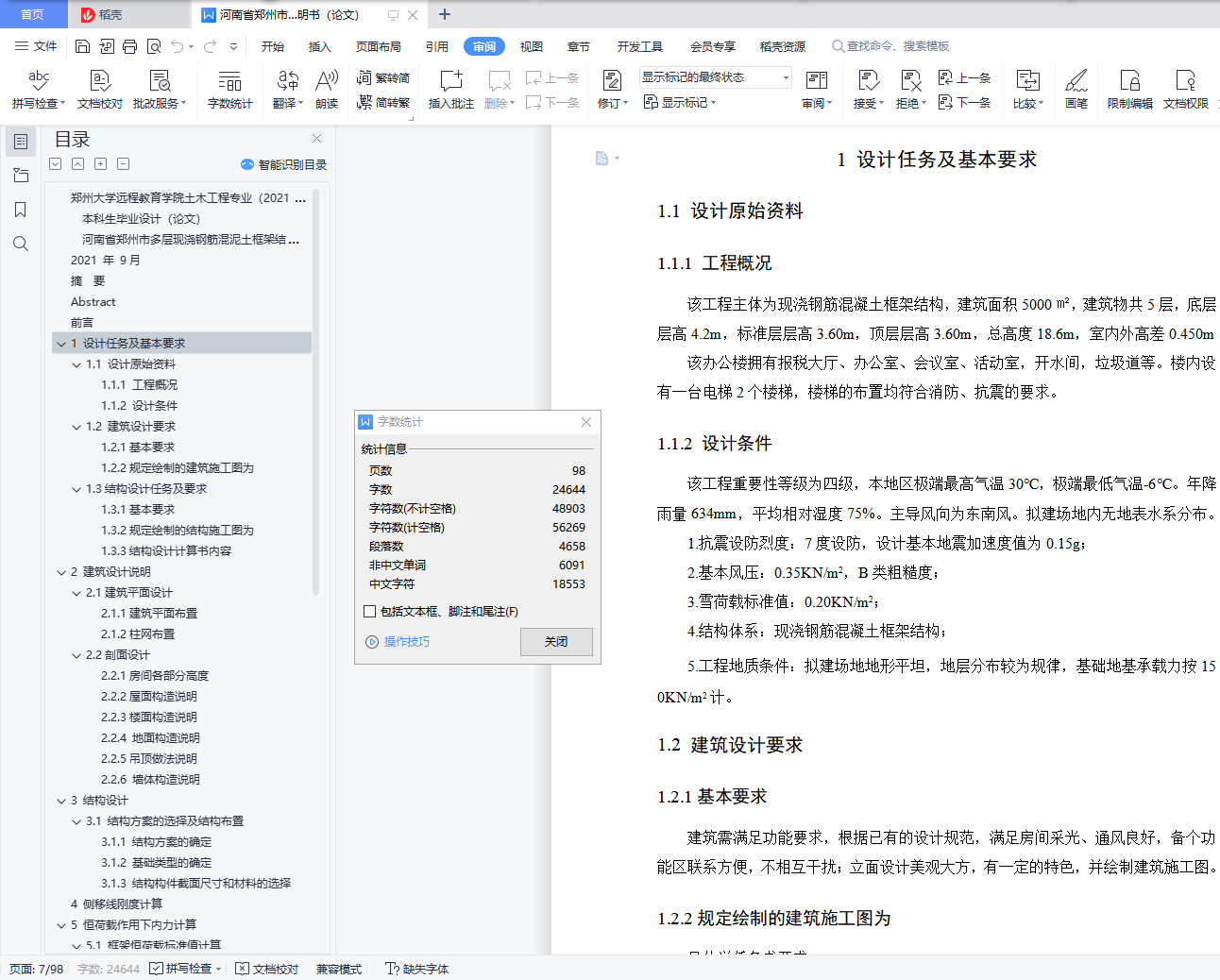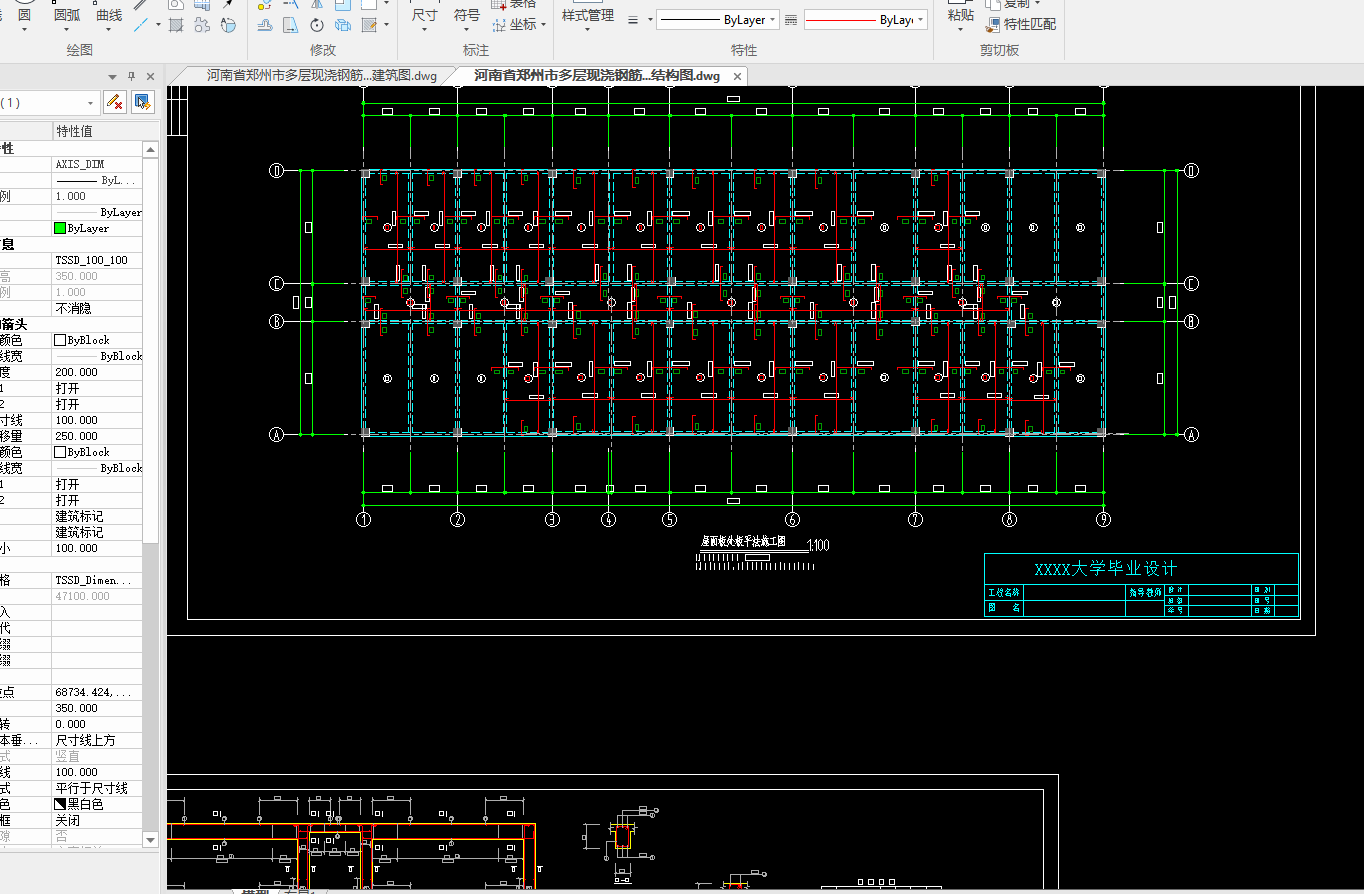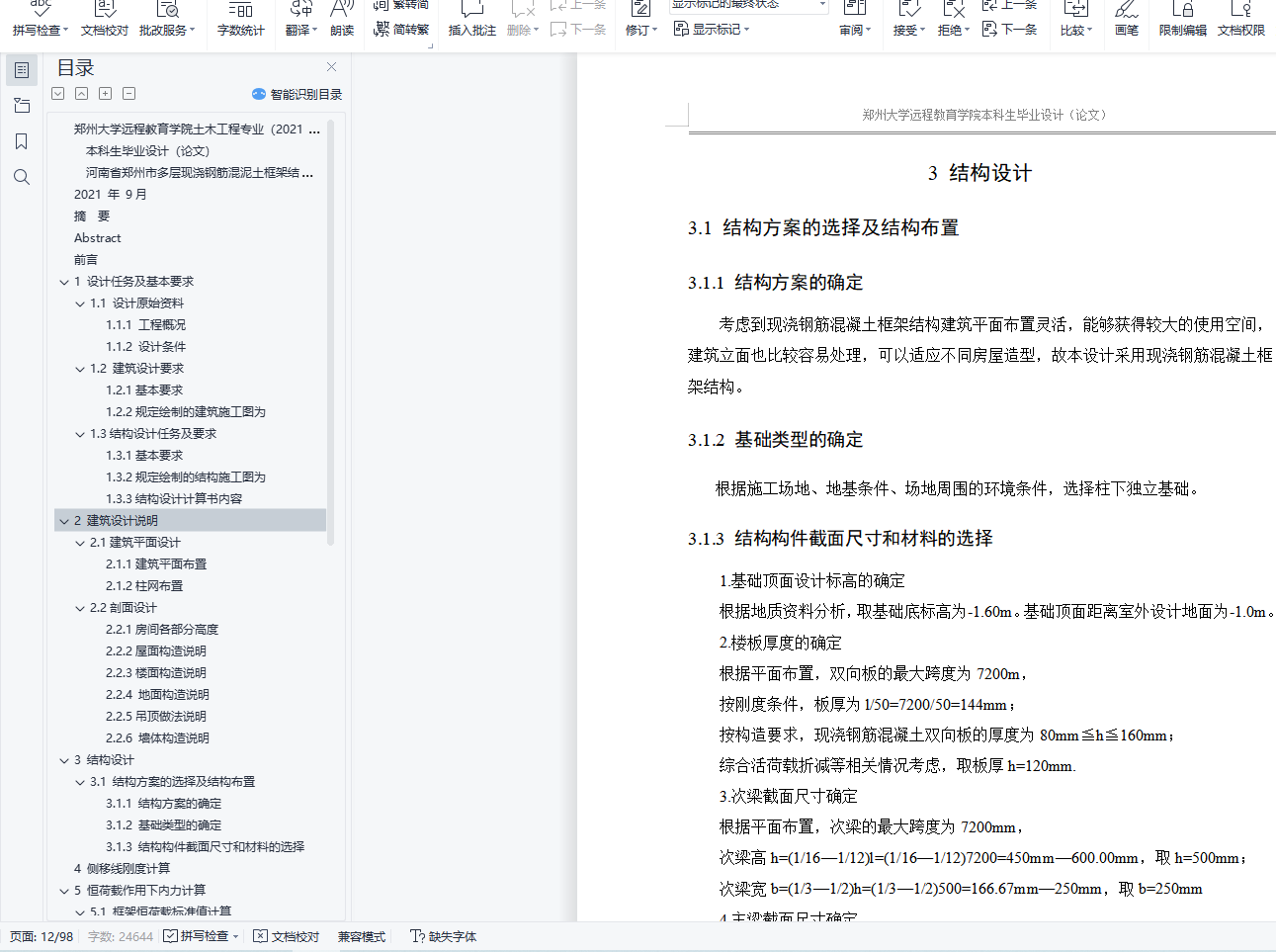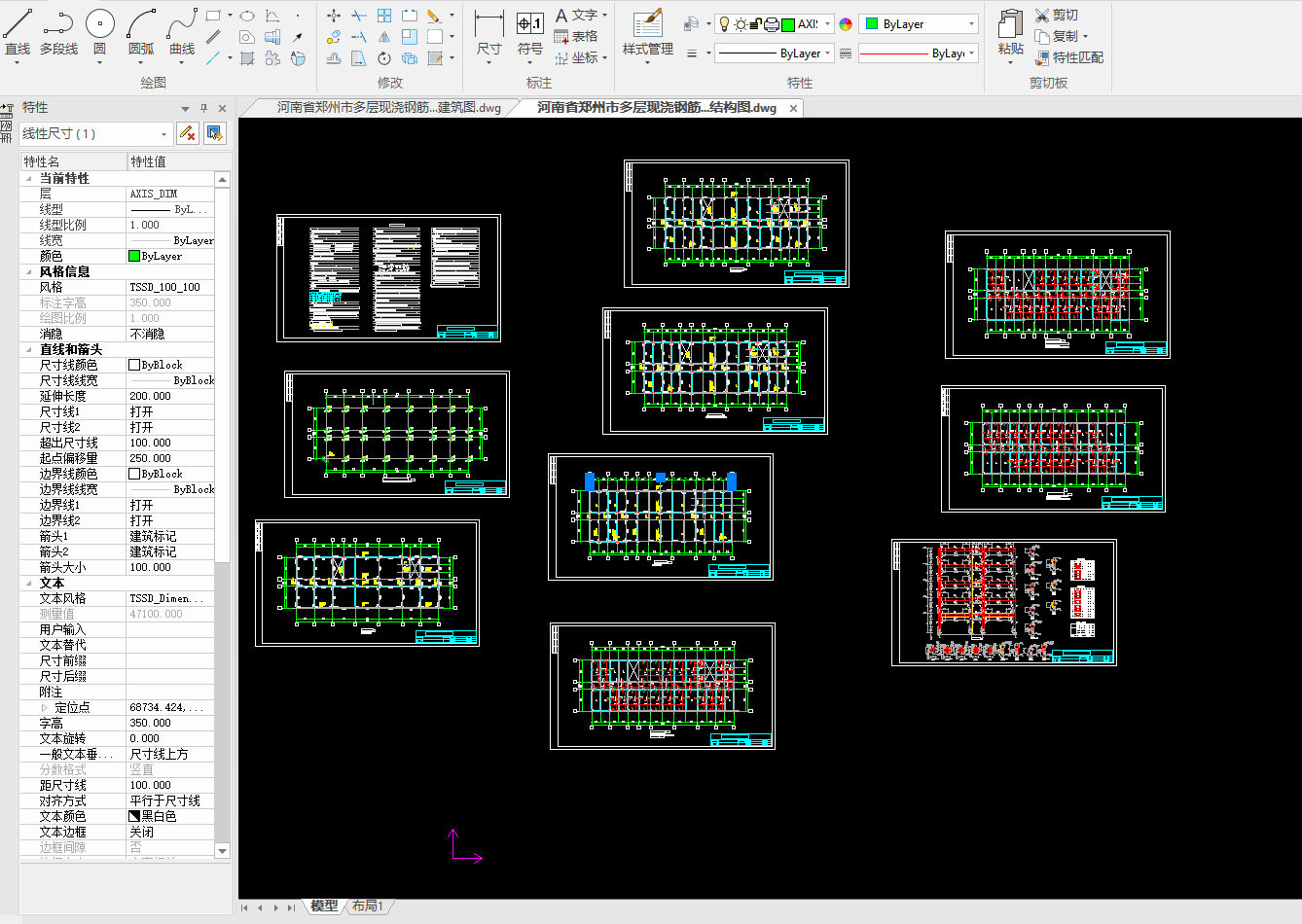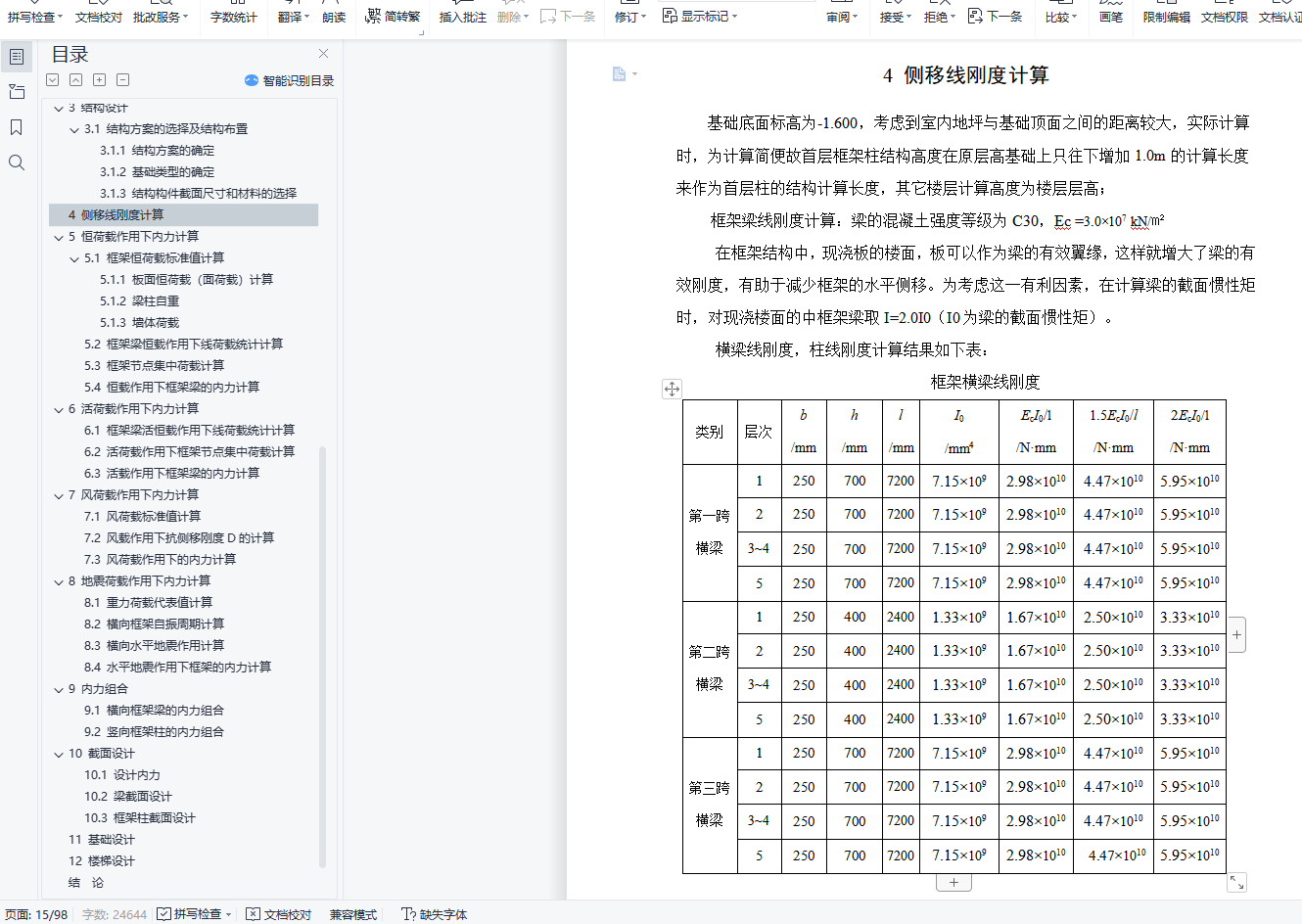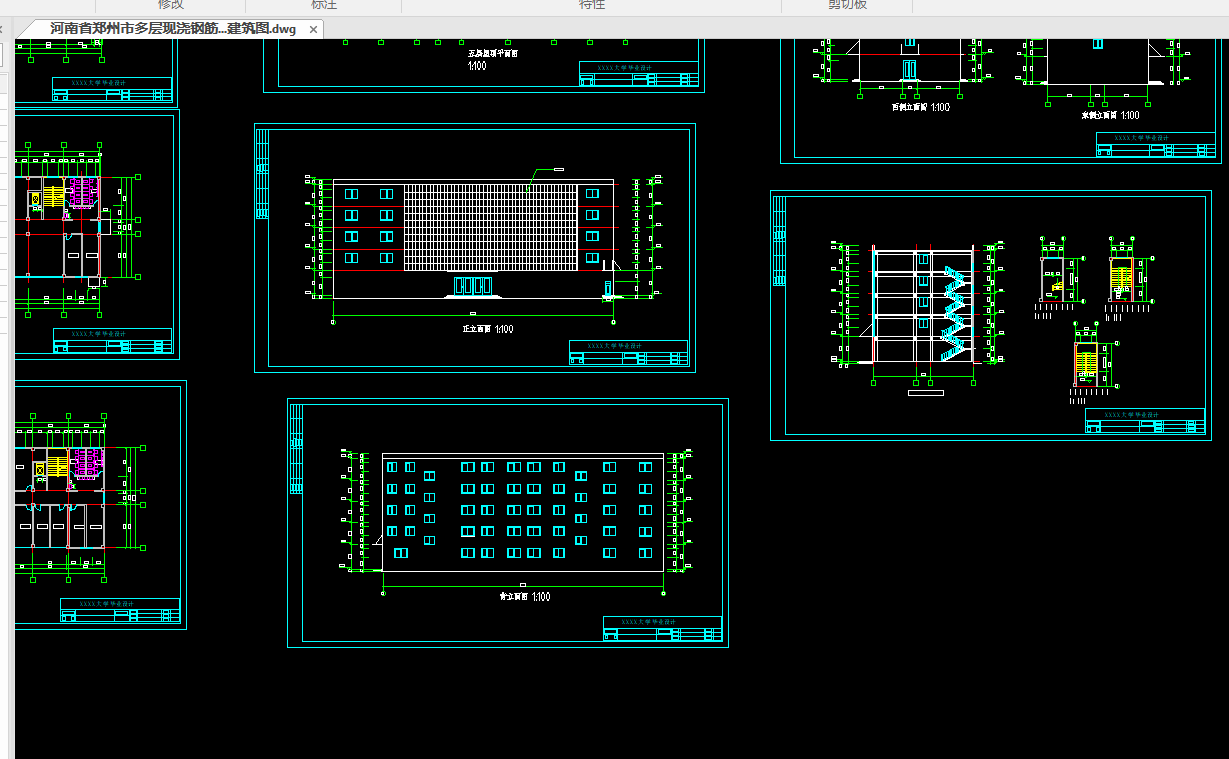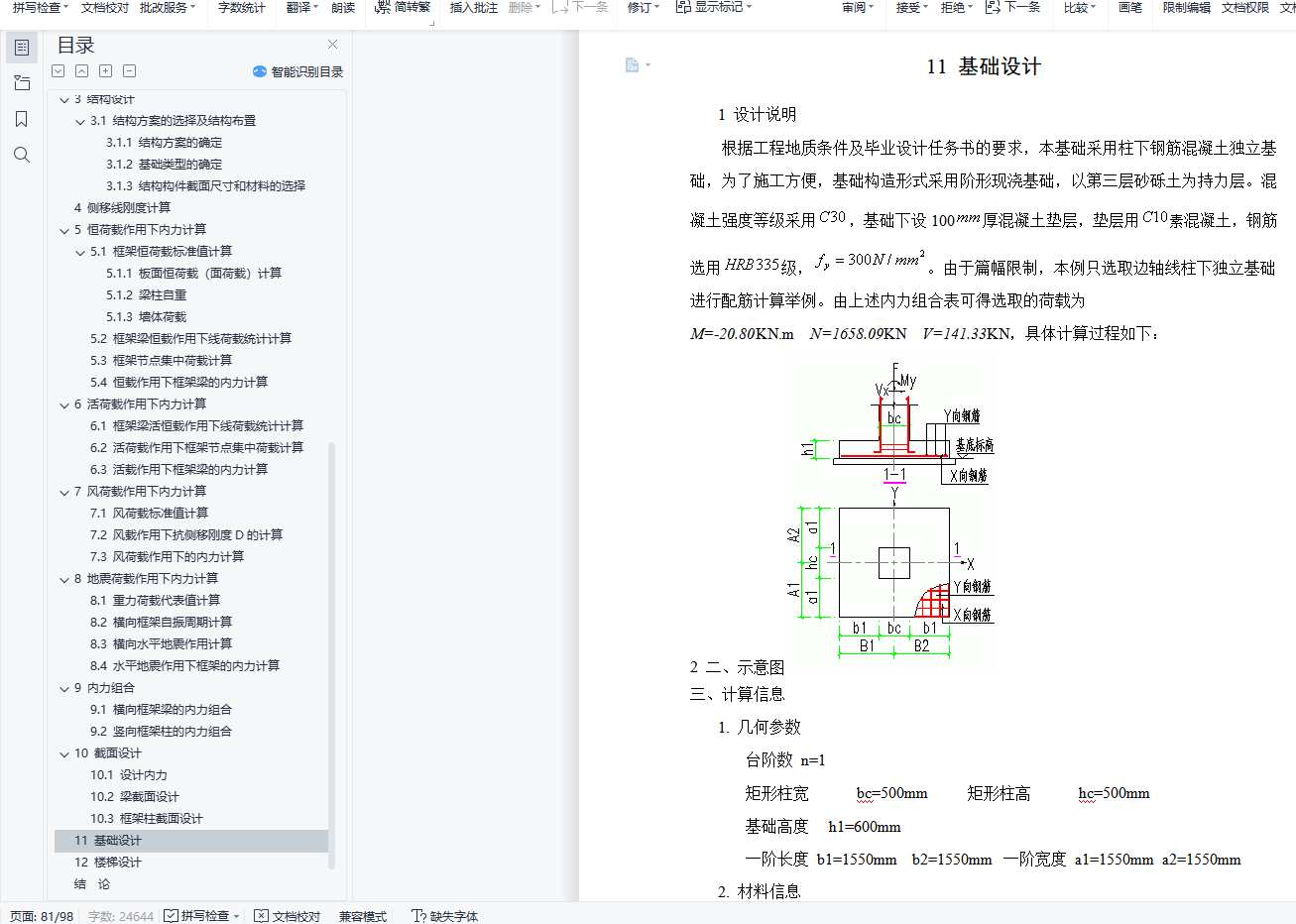摘 要
本项目为郑州地区税务局办公大楼设计,为现浇钢筋混凝土框架结构。在研究生设计过程中,主要进行建筑设计和结构设计两部分。结构设计分为手工计算和计算机计算两部分,建筑部分主要划分建筑功能,进一步确定建筑的平面图、立面和剖面。在结构设计部分,主要是梁柱的横断面设计和整栋建筑的抗震设计。手工计算部分的具体内容是对选定的水平框架的结构梁和柱进行设计,即根据确定的计算图,通过梁的统计计算,将水平荷载和竖向荷载组合起来,是一个组合的力,并用作设计标准来确定梁和柱的横截面尺寸和所需的钢筋面积。除了设计梁和柱外,还需要根据研究生设计的要求进行地基和现浇板。计算机计算部主要采用PKPM对整体结构和荷载输入进行建模,得到计算机化结果并分析合理性,然后绘制梁、板、柱结构的施工图,最后比较人工计算的结果。并分析计算机计算结果及产生差异的原因。
关键词: 建筑设计;结构设计;办公楼;荷载计算;计算配筋
Abstract
The project is designed by the Office Building of Zhoukou Regional Taxation Bureau and is a concrete frame system.In the graduate design process, the architectural design and structural design are mainly conducted.The structural design is divided into two parts: manual calculation and computer calculation. The building part is mainly divided into building functions to further determine the floor plan, elevation and section of the building.In the structural design section, it is mainly the cross-section design of beams and columns and the seismic design of the whole building.The specific content of the manual calculation section is to design the structural beams and columns of the selected horizontal frame, that is, combining the horizontal and vertical loads through the statistical calculation, is a combined force and used as a design standard to determine the cross-section size of the beam and column and the required reinforcement area.In addition to designing beams and columns, foundations and cast-in-place plates are required according to the requirements of the graduate design.The computer computing department mainly uses PKPM to model the overall structure and load input, obtain the computerized results and analyze the rationality, then draw the construction drawing of the beam, plate and column structure, and finally compare the results of manual calculation.The computer calculation results and the differences are analyzed.
Key words: architectural design; structural design; office building; load calculation; calculation of reinforcement
目 录
摘要 3
前言 4
1 设计任务及基本要求 5
1.1 设计原始资料 5
1.2 建筑设计要求 5
1.3结构设计任务及要求 5
2 建筑设计说明 6
2.1建筑平面设计 6
2.2剖面设计 6
3 结构设计 7
3.1 结构方案的选择及结构布置 7
4 侧移线刚度计算 11
5 恒荷载作用下内力计算 12
5.1 框架恒荷载标准值计算 12
5.2 框架梁恒载作用下线荷载统计计算 13
5.3 框架节点集中荷载计算 16
5.4 恒载作用下框架梁的内力计算 19
6 活荷载作用下内力计算 26
6.1 框架梁活恒载作用下线荷载统计计算 27
6.2 活荷载作用下框架节点集中荷载计算 28
6.3 活载作用下框架梁的内力计算 30
7 风荷载作用下内力计算 37
7.1 风荷载标准值计算 37
7.2 风载作用下抗侧移刚度D的计算: 38
7.3 风荷载作用下的内力计算 40
8 地震荷载作用下内力计算 45
8.1 重力荷载代表值计算 45
8.2 横向框架自振周期计算 47
8.3 横向水平地震作用计算 48
8.4 水平地震作用下框架的内力计算 50
9 内力组合 54
9.1 横向框架梁的内力组合 55
9.2 竖向框架柱的内力组合 62
10 截面设计 68
10.1 设计内力 68
10.2 梁截面设计 68
10.3 框架柱截面设计 70
11 基础设计 74
12 楼梯设计 80
结论 85
谢辞 86
参考文献 87
